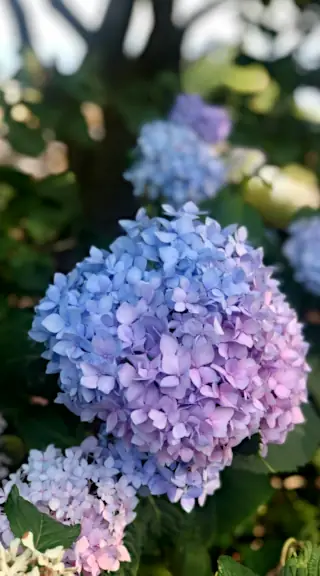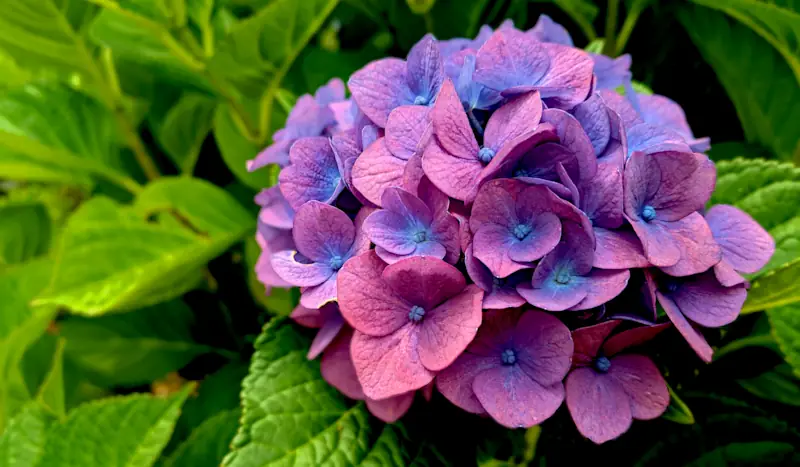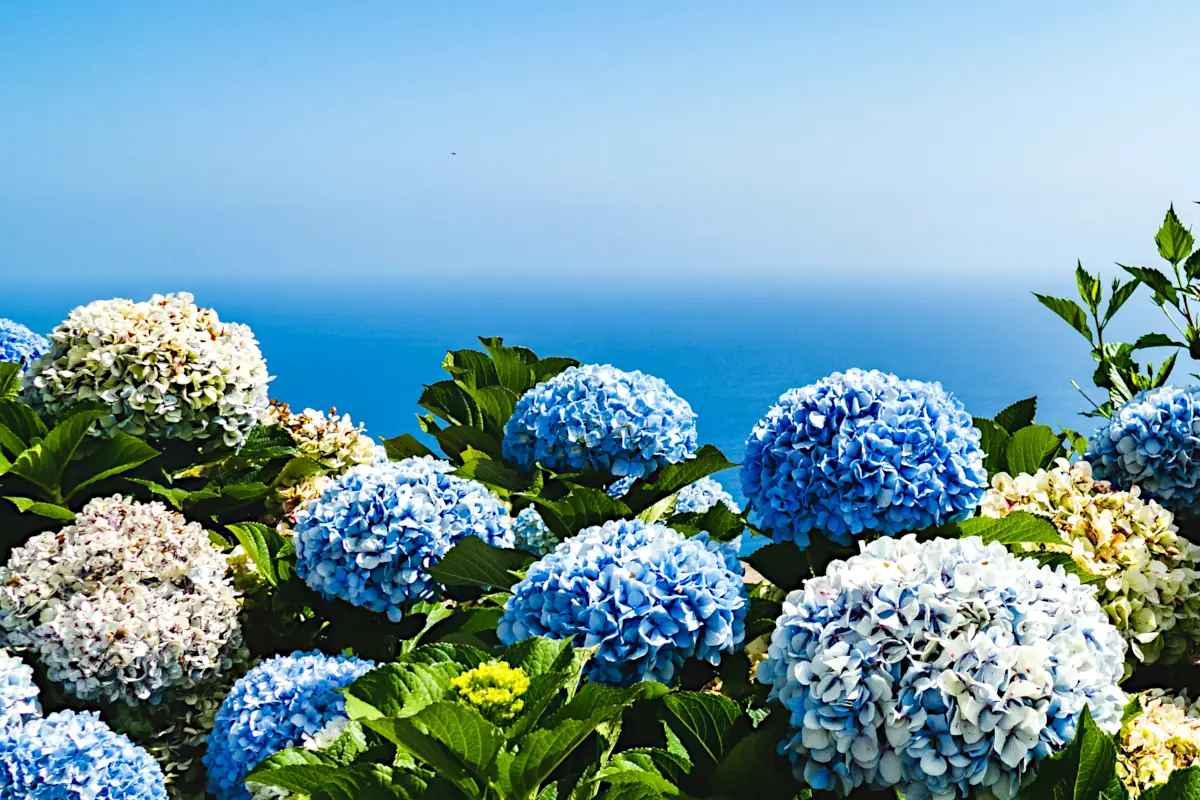Hydrangea care is essential if you want those vibrant, full blooms to return season after season. These garden favorites—known for their lush, colorful flowers—need just the right combination of pruning, feeding, and seasonal care to thrive. Whether you’re growing hydrangeas in the ground or in containers, mastering their care will reward you with long-lasting beauty.
Table of Contents
- How to Grow Hydrangeas Successfully
- Plant Profile
- Hydrangea Care Tips
- Did You Know?
- Common Problems and Solutions
- Types of Hydrangeas: Know Your Variety for Better Hydrangea Care
- FAQs about Hydrangea Care
- Final Thoughts on Hydrangea Care
How to Grow Hydrangeas Successfully
Growing hydrangeas starts with choosing the right spot and variety. These versatile flowering shrubs come in many forms, including bigleaf, oakleaf, panicle, and the popular Endless Summer hydrangea. They thrive in rich, well-drained soil and need consistent moisture—especially in warmer climates. The best time to plant hydrangeas is in early spring or fall, giving the roots time to establish before extreme temperatures set in.
To succeed with hydrangea cultivation, consider the specific type you’re planting. Big leaf hydrangea care, for instance, often includes attention to soil pH for color control, while care for oak leaf hydrangea may focus more on pruning and fall protection.
Plant Profile
| Feature | Details |
|---|---|
| Scientific Name | Hydrangea spp. |
| Common Name(s) | Hydrangea, Hortensia |
| Plant Type | Flowering shrub |
| Best Climate / USDA Zones | Zones 3–9 (varies by species) (What are USDA zones?) |
| Preferred Light Conditions | Morning sun, afternoon shade |
| Watering Needs | Moderate to high—keep soil consistently moist |
| Soil Type | Rich, well-draining, slightly acidic to neutral |
| Pet Safe or Toxic | Toxic to pets |
| Common Issues | Wilting, powdery mildew, leaf spot, incorrect bloom color |

Hydrangea Care Tips
- Water consistently: Especially in the first year. Aim for deep watering at the base to avoid fungal issues.
- Mulch generously: This helps retain soil moisture and protects roots.
- Feed with care: Use plant food for hydrangeas in spring and early summer for strong growth and blooms.
- Prune properly: Understand your variety. Hydrangea care pruning can differ—some bloom on old wood, others on new.
- Container tips: When growing potted hydrangeas, ensure proper drainage and repot when root-bound.
- Winter prep: Pruning hydrangeas for winter and applying mulch or covers can protect against frost.
Did You Know?
- The color of bigleaf hydrangea flowers can change based on soil pH—acidic soil produces blue blooms, while alkaline soil results in pink.
- Endless Summer hydrangeas can bloom on both old and new wood, offering more flexibility for pruning and longer flowering seasons.
- “Hortensia” is another name for hydrangeas, particularly in Europe, and refers mainly to the mophead type.
Common Problems and Solutions
- No Blooms? Likely due to improper pruning or a late frost. Protect buds with burlap or cloth in early spring.
- Leaf Spot or Mildew? Improve air circulation and avoid overhead watering.
- Yellow Leaves? Could be overwatering or poor drainage. Ensure soil dries slightly between waterings.

Types of Hydrangeas: Know Your Variety for Better Hydrangea Care
Understanding the different types of hydrangeas is key to giving each plant the care it needs. From the iconic Bigleaf to the hardy Panicle and the striking Oakleaf, each variety offers unique beauty and specific care requirements—especially when it comes to pruning. Use the table below to identify your hydrangea type and learn how to care for it properly.
Common Hydrangea Types and Their Features
| Type | Scientific Name | Flower Shape | Notable Features | Bloom Time | When to Prune |
|---|---|---|---|---|---|
| Bigleaf Hydrangea | Hydrangea macrophylla | Mophead or Lacecap | Color changes with soil pH; showy blooms | Late spring–summer | After flowering (late summer) |
| Panicle Hydrangea | Hydrangea paniculata | Cone-shaped | Hardy, sun-tolerant, easy care | Midsummer–fall | Late winter or early spring |
| Smooth Hydrangea | Hydrangea arborescens | Dome-shaped | Blooms on new wood; large white flowers | Early–mid summer | Late winter or early spring |
| Oakleaf Hydrangea | Hydrangea quercifolia | Cone-shaped | Unique foliage, great fall color | Early–mid summer | After flowering |
| Climbing Hydrangea | Hydrangea anomala subsp. petiolaris | Lacecap (flat) | Vining habit; slow starter, vigorous later | Late spring–summer | Minimal pruning; after flowering |
| Mountain Hydrangea | Hydrangea serrata | Lacecap | Smaller and more cold-hardy than Bigleaf | Late spring–early summer | After flowering |
FAQs about Hydrangea Care
What is the best spot to plant hydrangeas?
Choose a location with morning sun and afternoon shade. Avoid full shade or intense afternoon sun, which can stress the plant.
How do I care for hydrangeas in pots?
When growing a hydrangea in a pot, choose a large container with good drainage. Use rich potting soil, keep it well-watered, and feed regularly. Consider moving the pot to a sheltered spot in winter for protection.
When should I prune my hydrangeas?
Pruning times vary by type. For Endless Summer hydrangea care, prune lightly after the first bloom. For hydrangea tree fall care or oak leaf types, prune in late winter or early spring depending on bloom type.
Final Thoughts on Hydrangea Care
Hydrangea care doesn’t have to be complicated. With the right knowledge about your specific variety, you can enjoy a colorful garden or container display year after year. Whether you’re managing hydrangea fall care, growing hydrangeas in a container, or tending to a classic big leaf variety, consistency and timing are key to success.
Keep nurturing your plant growing skills—if you’re interested in caring for other seasonal bloomers, check out our Christmas Cactus Care Guide for another rewarding plant experience.

